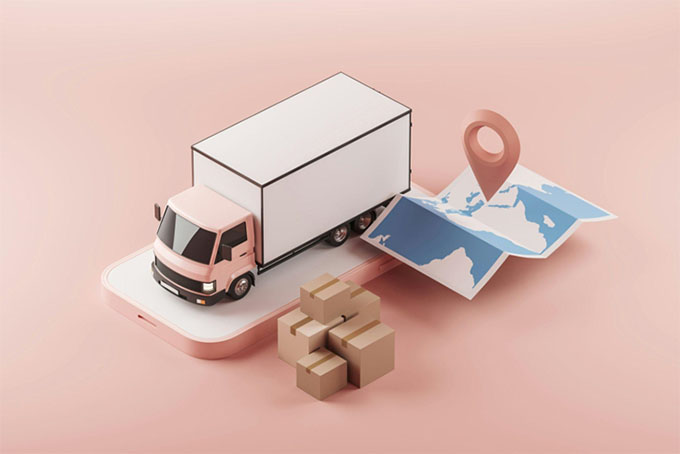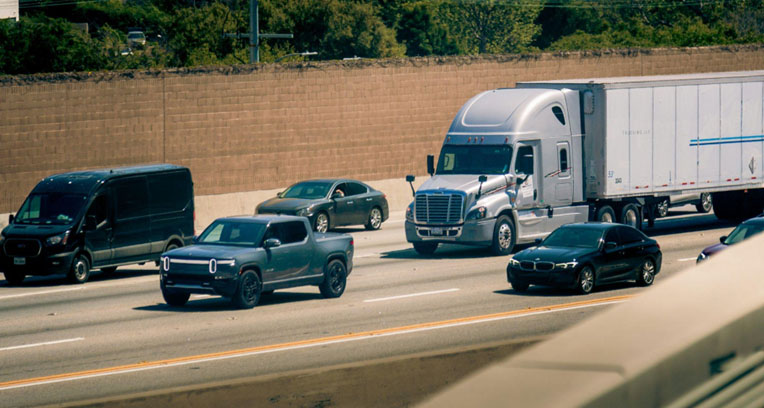The Role of Autonomous Vehicles in Shaping Australia's Freight Future

Australia's freight industry stands on the cusp of a transformative era. With the integration of autonomous vehicles (AVs), the sector is poised to experience unprecedented advancements in efficiency, safety, and sustainability. As global logistics evolve, Australia must adapt to maintain its competitive edge in the freight domain.
The vastness of the Australian landscape presents unique challenges for freight transportation. Long distances between urban centers, coupled with a sparse population density in remote areas, have historically posed logistical hurdles. However, AVs offer promising solutions to these challenges, ensuring timely deliveries and reducing operational costs.
In this evolving landscape, companies like AAA Transfers exemplify the integration of advanced logistics solutions. By offering streamlined services that enhance the efficiency of freight movements across Australia, they highlight the potential benefits of embracing technological innovations in transportation.
Understanding Autonomous Freight Vehicles
Autonomous freight vehicles are equipped with advanced technologies such as LiDAR, radar, GPS, cameras, and AI-powered control systems. These systems work together to interpret road conditions, identify objects, manage speed, and execute driving decisions without human intervention. In the freight sector, AVs primarily operate in long-haul trucking and last-mile delivery, offering scalability for high-volume routes.
There are various levels of autonomy, from Level 1 (driver assistance) to Level 5 (fully autonomous, no human input). While Level 5 remains a longer-term vision, Level 4 AVs — which can operate without a driver under specific conditions — are already being trialled and, in some markets, deployed.
Benefits of Integrating AVs into Australia's Freight Sector
1. Enhanced Safety
Human error contributes to over 90% of traffic incidents. AVs, programmed for consistency, vigilance, and adherence to traffic laws, dramatically reduce the probability of crashes due to fatigue, distraction, or judgment errors. For a country like Australia, where freight routes often involve long-distance travel through sparsely populated regions, AVs can greatly improve road safety outcomes.
2. Operational Efficiency
Autonomous trucks can operate 24/7 without breaks, unlike human drivers who are legally limited by fatigue management laws. This extended operational capability reduces delivery times and allows for better utilization of assets. Logistics companies can also use real-time route optimization to avoid congestion and improve fuel efficiency.
3. Cost Reduction
Labour costs form a significant portion of freight expenses. While AVs involve high initial investment, over time they can reduce costs through:
- Decreased reliance on long-haul drivers
- Lower insurance premiums due to reduced accident rates
- Fewer vehicle downtimes thanks to predictive maintenance and optimal driving behavior
Additionally, autonomous systems tend to use smoother acceleration and braking, resulting in fuel savings and less wear on vehicle components.
4. Environmental Impact
Autonomous freight vehicles can help decarbonize road transport. Their ability to maintain consistent speeds, avoid idling, and follow efficient routing reduces fuel use and emissions. When integrated with electric vehicle (EV) platforms, AVs become a powerful tool for reducing the freight sector’s carbon footprint.
5. Addressing Labour Shortages
Australia’s logistics sector is experiencing a shortage of skilled drivers, exacerbated by aging workforce demographics and post-pandemic labour shifts. AVs can help ease this pressure by automating high-volume routes, allowing human drivers to focus on complex urban or short-haul assignments.
Challenges and Considerations

Despite the benefits, the road to widespread AV adoption isn’t without its obstacles.
Regulatory Complexity
Australia lacks a fully harmonized framework for AV regulation. Trials are underway in various states, but legal inconsistencies across jurisdictions limit scalability. Harmonized national laws covering vehicle certification, insurance liability, road usage, and data privacy will be critical for AV deployment at scale.
Infrastructure Gaps
Autonomous trucks require clear lane markings, smart traffic signals, and connectivity infrastructure for vehicle-to-everything (V2X) communication. Rural and regional freight routes — especially those frequented by heavy vehicles — must be upgraded to AV-ready standards.
Public Trust and Workforce Resistance
Trust is crucial for AVs to gain acceptance. Concerns about safety, job displacement, and technological reliability must be addressed through transparent communication, rigorous safety testing, and inclusive transition planning for the freight workforce.
Cybersecurity and Data Integrity
Autonomous trucks depend heavily on data and software. This exposes them to cyber threats, from GPS spoofing to remote hacking. Ensuring robust cybersecurity protocols, real-time monitoring, and failsafe systems is critical for safe operations.
Global Insights and Australia's Position
Countries like the U.S., Germany, and China are actively piloting autonomous freight projects with considerable government and private investment.
- In the U.S., companies like Waymo Via and Aurora are running long-haul trials across interstate highways.
- In Europe, Daimler Trucks and Volvo are testing platooning technologies and semi-autonomous trucks.
- China’s Plus and Pony.ai are advancing rapidly with integrated logistics networks featuring autonomous trucks.
Australia can draw insights from these pilots but must adapt them to local realities — such as long-distance rural routes, extreme weather conditions, and limited refueling infrastructure in remote regions.
Additionally, public-private partnerships will be vital. The National Transport Commission (NTC) and various state governments are currently supporting autonomous vehicle trials. Expanding these programs to include freight corridors will accelerate readiness.
Key Players Driving AV Freight Innovation in Australia
While Australia’s AV freight ecosystem is still emerging, several domestic and international stakeholders are laying the groundwork:
- Locomation Australia: Partnering with logistics companies to test convoy-based AV solutions
- Cohda Wireless (Adelaide): Developing V2X communication software for road safety and AV efficiency
- Aurora Innovation: Collaborating with global partners to understand market entry strategies in Australia
- Telstra and Transport for NSW: Involved in connected road infrastructure development supporting AV trials
In addition, startups and research hubs are working on AI perception, remote monitoring, and AV safety systems tailored to Australia’s transport conditions.
Collaborative Innovation: Government, Industry, and Academia
The advancement of AVs in freight is not the responsibility of any single stakeholder. Instead, a collaborative model that brings together transport authorities, logistics providers, universities, and tech companies is essential.
For instance:
- Queensland's AV Pilot Program offers a blueprint for large-scale testing of safety systems.
- Monash University and University of Sydney are conducting real-world impact studies on AV freight integration.
- Infrastructure Australia has flagged digital mobility and automation as critical for future-ready freight networks.
Encouragingly, the 2022–2023 federal budget included investments in smart infrastructure and digital freight corridors, which are key enablers for AV deployment.
Preparing the Workforce for an Autonomous Future

As AVs gradually integrate into logistics, companies will need to plan for workforce adaptation. Rather than displacing workers, automation may shift roles toward:
- Remote vehicle operation and oversight
- Data monitoring and fleet analytics
- Maintenance and calibration of AV systems
- Safety management and route coordination
Reskilling programs, vocational training, and partnerships with TAFE institutions will be key in ensuring a just transition for transport workers.
Next Steps for Industry Stakeholders
Logistics operators, fleet managers, and infrastructure planners in Australia should begin preparing for autonomous freight by:
- Engaging in AV Trials: Participate in pilot programs to gain operational insight
- Auditing Infrastructure: Assess which freight routes are AV-compatible and where upgrades are needed
- Reviewing Risk Models: Update insurance, safety, and compliance policies to reflect mixed autonomy environments
- Collaborating with Regulators: Advocate for policy clarity that enables responsible innovation
Australia’s geographic size, resource-rich regions, and trade corridors uniquely position it to benefit from AV freight — but only with forward-thinking strategy and inclusive planning.
A Smarter Freight Future Is Within Reach
Autonomous vehicles are more than just a futuristic concept — they’re an imminent reality that promises to reshape Australia’s freight sector. While challenges exist, they are far outweighed by the long-term benefits of safety, sustainability, and efficiency.
With aligned investment, supportive policy, and cross-sector collaboration, Australia can move from AV experimentation to leadership. Companies like AAA Transfers already demonstrate the logistics sophistication that AV integration requires. By embracing innovation now, the freight industry can create a smarter, faster, and more resilient future.
|